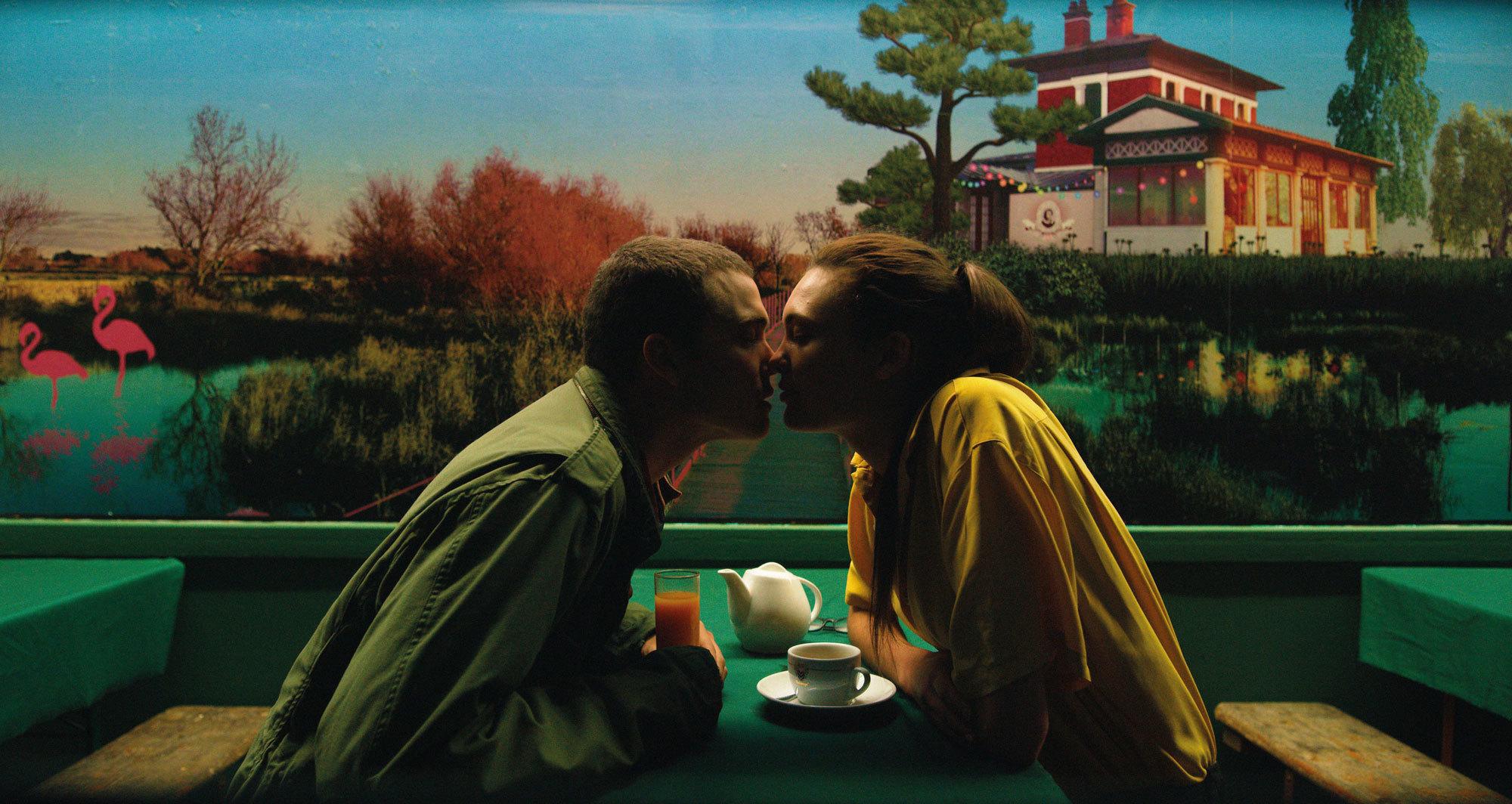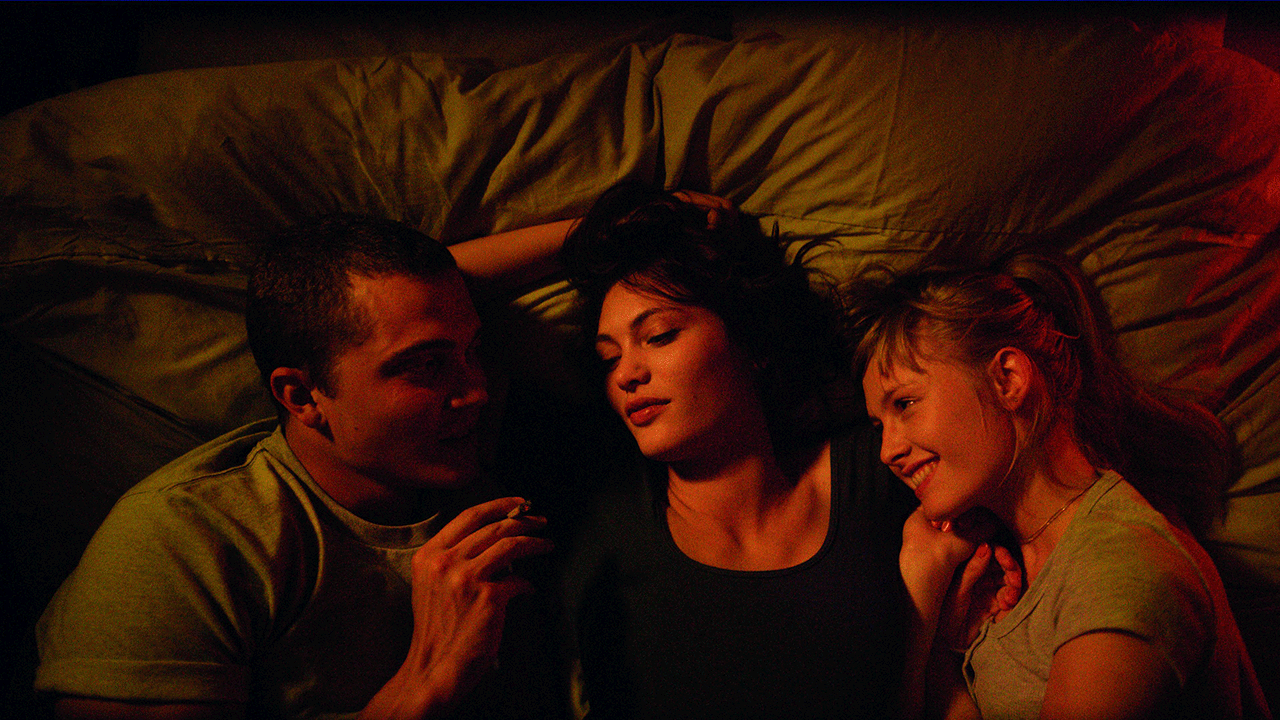Is Gaspar Noé‘s “Love” pornography? What is the difference between pornography and erotic cinema?
Gaspar Noé‘s Love (2015) opens with a couple pleasuring each other with a double hand-job, in a static shot held for over three minutes, in 3D. This image, as the rain pours outside, is Noé’s intimate (some might say too-intimate) portrait of a couple in love. Later, protagonist and wannabe filmmaker Murphy (Karl Glusman) says he wants to make a movie about love, which he defines as “sentimental sex.” Love is full of sentimental sex, almost to an absurd degree. (It also includes plenty of love-free sex. Moments after he voices his “love” definition at a party, Murphy evades his beloved girlfriend to have sex with a stranger in the bathroom.) Nor are the vast majority of sex scenes, in an obvious way, essential to the story. So a question that arises not far into Noé’s 135-minute sentimentally sexy picture is, what separates this from pornography?*
In most definitions of pornography, the emphasis rests on the purpose or intention of the work and its desired effect on the audience. According to Merriam-Webster.com, pornography is “the depiction of erotic behavior…intended to cause sexual excitement,” while Google says it is explicit material “intended to stimulate erotic rather than aesthetic or emotional feelings.” Is Noé’s intention to stimulate his audience’s sexual rather than their aesthetic or emotional feelings? If pornography is defined as solely intended to cause sexual arousal, Love’s artistic ambitions are greater. Whether or not it fails to meet those goals, it is certainly full of sentiment and pretensions to explore the meaning of life and relationships. After the film’s opening, we fast-forward two years to find Murphy in bed with another woman as a baby cries, and we realize that the loving couple has fallen apart. The love that Murphy seeks exists in the past, so the film moves backward, delving into his troubled relationship with Electra (Aomi Muyock), who left him after he impregnated Omi (Klara Kristen). In the present, near the beginning of the film, Electra has probably committed suicide. Thus Murphy’s desire is unattainable, and he ruminates at length on what went wrong as we relive his overactive sex life—rendered in 3D, with minimal time cuts, for our viewing pleasure or disgust.

Love (2015)
But while Love clearly aspires to be more than pornography, it is hard to argue that Love does not seek also to cause sexual arousal. A distinction is often made between pornography and “erotic art,” which depicts erotic material but is not only for sexual stimulation. Noé himself has claimed that he is creating erotic cinema. Vulture writes, “Much of the inspiration for Love came from his believing we need more of the kinds of visuals that turned him on as a horny young man. ‘There’s nothing like erotic cinema anymore,’ says Noé, ‘so if you want to see sexual images, you end up Googling these gang-bang images with the guys who look like firemen and shaven girls who look like bodybuilders — and that has nothing to do with what these teenagers are going to experience. So maybe it’s better to clean their eyes with images that are closer to life.’” Noé also told Vulture, “The movie is mostly arousing on a sentimental level,” and added, “I cried during editing… it was so sad.” Noé intends to stimulate us sexually and emotionally at once, and he tells us as much through Murphy’s musing about making a movie on love. (Murphy serves as an clear substitute for Noé, as we’re told repeatedly of Murphy’s ambition to be a filmmaker. Murphy’s child—later used as a symbol for his “inner child”—is also named Gaspar, while Electra’s sleazy art gallery owner ex-boyfriend is named Noé. As Noé told Vulture, Love is a “first-degree movie,” highly personal and essentially about himself, whereas “second-degree movies… are about other people, or third-degree movies, which are movies about other movies.”)

Love (2015)
With all that in mind, Love is best viewed as a sentimental pornography or pornographic romance. Actually, if classed as semi-pornography or explicit romance, Love becomes a more interesting film. And why can pornography not aspire to the same heights of story and romance that non-pornographic films do? Perhaps if more watched erotic cinema, instead of the kind of pornography that depicts sex as mere sex (or sex as violence), this would be a healthier outlet for and influence on young people, especially young boys.
What happens when we examine the film not as pornography or erotic cinema? If the traditional story criteria for including scenes in a narrative is to advance plot or illuminate character (or at least to illuminate something), most of Noé’s seemingly endless sex scenes don’t pass that test—by and large, they fail to reveal much if anything new and go on far longer than necessary from a narrative perspective. The impression we gain from most sex scenes is the opposite of illumination; it is constant, mind-numbing repetition. Maybe this is the point: Murphy, as the self-destructive sex-addicted prototypical male, is not learning, improving, progressing. He is hooked on cycles and animal urges that destroy what’s good in his life. He is the man who does not follow love but is driven by pure sex. In this sense, the repetitive, even boring (unless you are engaged through sexual arousal, which is to say watching the film as porn) barrage of sexual imagery is an expression of meaninglessness. On the other hand, this interpretation may also be a justification for the choice to include many scenes which are simply not thoughtful enough.

Love (2015)
Love’s artistic value lies most irrefutably in its visual innovation and exploration of the 3D medium in new spaces. The explicit scenes arguably represent a bold visual exploration and pure cinematic representation of sex. The film has fun with the 3D format—at one point, Murphy’s penis, in close-up, projectile ejaculates out on to the audience. Some might find it a bold experiment to expose a mainstream audience to uncomfortably long, intimate 3D visuals of sex. Outside of the sex scenes, the eye of the film is also clever (more so than the heavy-handed script, which includes dialogue like Murphy: “What is the meaning of life?” Electra: “Love.”). While we are accustomed to 3D in action-packed, larger-than-life settings, here the 3D becomes interesting for its portrayal of domestic space. We watch the backs of heads moving through doors, the human body in its mundane movements around the house. Transitions signal chronological jumps by moving to other moments in time while keeping the characters in the same spots within the frame. These cinematic techniques and explorations of the language of visual storytelling are the film’s highest claim to art. They are also what will be most appreciated by audiences members apart from those (perhaps a higher number) that will enjoy it in the way they enjoy porn.
Ultimately, the choice to include such an extreme number of sex scenes makes it hard to see Love as a wholly not-pornographic film, but its blend of sexual expression and traditional narrative opens a difficult debate as to where the line between art and pornography lies. Supreme Court Justice Potter Stewart famously stated in Jacobellis v. Ohio in 1964, discussing the threshold for identifying obscenity, “I know it when I see it.” In the case of Love, though, it’s not quite so easy to know what you’re seeing.
*In discussing whether Love is pornographic, I don’t intend any value judgment of the film on that basis.

